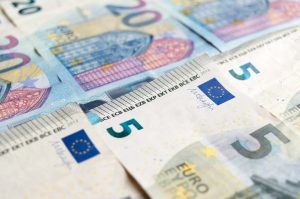Forex trading is a lucrative business that involves buying and selling of currencies with the aim of making a profit. One of the most important tools in forex trading is the pip, which is the smallest unit of price movement in the forex market. Understanding how to place a pip in forex trading is crucial for any trader looking to make a profit in the market.
What is a Pip?
A pip is a unit of measurement used in forex trading to measure the smallest price movement in a currency pair. For most currency pairs, a pip is equivalent to 0.0001 of the quoted currency. For example, if the EUR/USD currency pair is trading at 1.1000, a movement of 1 pip would be a change in the fourth decimal place, from 1.1000 to 1.1001. However, for currency pairs that have the Japanese yen as the quoted currency, a pip is equivalent to 0.01 of the quoted currency.
Why is a Pip Important?
Pips are important in forex trading because they allow traders to calculate their profits and losses accurately. For example, if a trader buys the EUR/USD currency pair at 1.1000 and sells it at 1.1100, they have made a profit of 100 pips. Similarly, if a trader buys the EUR/USD currency pair at 1.1000 and sells it at 1.0900, they have made a loss of 100 pips.
How to Place a Pip in Forex Trading
Placing a pip in forex trading is a simple process that involves setting up a trade and calculating the potential profit or loss. Here are the steps to follow:
Step 1: Choose a Currency Pair
The first step in placing a pip in forex trading is to choose a currency pair to trade. There are numerous currency pairs available in the forex market, and traders should choose the ones that they are most familiar with. Some of the most popular currency pairs include EUR/USD, USD/JPY, GBP/USD, and USD/CHF.
Step 2: Set Up a Trade
Once a currency pair has been chosen, the trader should set up a trade by selecting the lot size, stop-loss, and take-profit levels. A lot size refers to the amount of currency that the trader is buying or selling, and it determines the potential profit or loss. The stop-loss level is the price at which the trader is willing to close the trade if the market moves against them, while the take-profit level is the price at which the trader is willing to close the trade if the market moves in their favor.
Step 3: Calculate the Potential Profit or Loss
After setting up the trade, the trader should calculate the potential profit or loss by using the pip value. The pip value is the monetary value of a single pip, and it varies depending on the lot size and the currency pair. To calculate the pip value, the trader should divide the lot size by the exchange rate and multiply the result by the pip size. For example, if the lot size is 100,000 units of currency, the exchange rate is 1.1000, and the pip size is 0.0001, the pip value would be $10.
Step 4: Monitor the Trade
Once the trade has been set up and the potential profit or loss has been calculated, the trader should monitor the trade and make any necessary adjustments. If the market moves in their favor, they should consider moving the stop-loss level to lock in profits. If the market moves against them, they should consider closing the trade to limit their losses.
Conclusion
Placing a pip in forex trading is a crucial skill that every trader should master. By understanding how pips work and how to calculate the potential profit or loss, traders can make informed decisions and increase their chances of making a profit in the market. However, it is important to remember that forex trading is a high-risk business, and traders should always use risk management strategies to minimize their losses.






